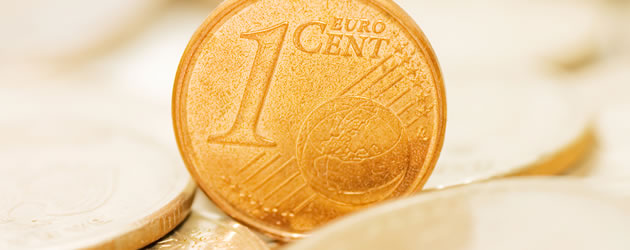Eurozone Industrial Production Betters Estimates, EUR/AUD Remains Bullish
Figures for January have shown that Eurozone industrial production bounced back after falling in December, making a stronger-than-expected recovery. On a monthly basis, production increased 2.1%, beating the forecast by 0.4%, while compared to twelve months prior, production grew 1.2% better-than-expected, printing at 2.8%.
Earlier…
The Euro (EUR) is still weak today after last week’s turbulent action following the European Central Bank (ECB) policy meeting. Meanwhile, the Australian Dollar (AUD) has been weakened following a new round of disappointing data from China and concerns over the nature of the recent iron ore price rise.
Mario Draghi’s Explosive Policy Announcements Continue to Weigh on Euro; Australian Dollar Weakness allows EUR/AUD Advance
Events before the weekend continue to drag on the Euro, with the common currency sliding -0.2% against Pound Sterling (GBP), -0.3% against the Indian Rupee (INR), -0.4% against the US Dollar (USD) and -0.5% against the Japanese Yen (JPY). The currencies the Euro has been able to strengthen against, including the Australian Dollar, are those weakened by data or current events.
The Euro is still falling on correctional trading and profit-taking after spiking last Thursday. The ECB unleashed harsher stimulus measures than the markets had been expecting, surprising even the most dovish of forecasts. The Euro slump was short-lived, however, after ECB President Mario Draghi signalled that the current easing cycle could be at an end. In the space of just a few hours the EUR/AUD exchange rate rocketed from 1.4478 to 1.5078.
The Euro to Australian Dollar (EUR/AUD) exchange rate is currently trading up 0.5% in the region of 1.4766.
Australian Dollar to Euro (AUD/EUR) Exchange Rate Soft as China Fears Begin to Rise Again
Disappointing data from China has dampened demand for the commodity Dollars recently, the ‘Aussie’ included. Figures over the weekend showed a greater-than-expected slowdown in industry and retail. Industrial production year-on-year (YoY) growth slowed from 5.9% to 5.4%, while YoY retail sales slipped from 11.1% to 10.2%, disappointing forecasts in both cases, which had anticipated a slowdown of -0.1%.
The news has sparked fresh concerns regarding the health of the Chinese economy, softening appetite for high-risk assets such as the Australian Dollar. The ‘Aussie’ has been further weakened by uncertainty regarding the current rally in iron ore prices. The commodity jumped 19% last Monday on hopes that the Chinese manufacturing sector was planning to boost production.
However, analysts believe the main reason for the current price strength is thanks to speculators, the same funds which contributed to the stock market volatility at the beginning of the year. While the rise in iron ore bodes well for the Australian economy, there are serious doubts in the market as to whether or not the rally is sustainable.
The Australian Dollar to Euro (AUD/EUR) exchange rate is currently trading between 0.6746 and 0.6800.
Euro to Australian Dollar (EUR/AUD) Exchange Rate Forecast: ECB Supervisory Board Members could Spark Volatility
Eurozone industrial production figures for January are scheduled for release later during the European session, but otherwise there is little data to spark movement for the common currency. Investors will be keeping an eye on speeches from two members of the ECB Supervisory Board, Danièle Nouy and Ignazio Angeloni, for any comments on Eurozone banking or ECB policy.
The Euro to Australian Dollar (EUR/AUD) exchange rate is currently trading between 1.4697 and 1.4822.



